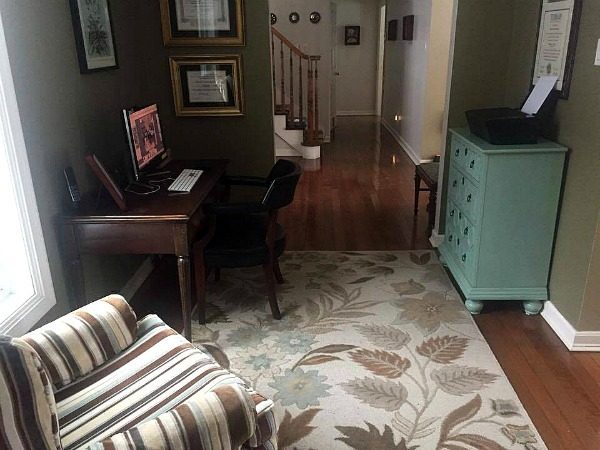The i401k (also known as the Individual 401K, one participant 401k, or Solo 401K) is the 401K plan for Independent Contractors or sole proprietors. Just as a traditional 401K offers myriad benefits for employees like tax deferred retirement savings and the benefit of lowering your tax bill, the i401K plan was set up to offer the same benefits for independent contractors and individual business owners. The IRS defines it here.
Tax Savings for Independent Contractors
Since I’ve worked as an independent contractor for several years, the i401K allows me to contribute in two ways:
- as an employee, making salary-deferred contributions of up to $19,000 in 2019
- as an employer (because I own a sole proprietorship), making profit-sharing contributions of up to $56,000 (including the $19,000 salary deferral) a year, tax free, for retirement. There are a couple of caveats to this, so read on for more details!

Since my favorite investment company, Vanguard, now offers these plans, setting up an account was a no-brainer for me.
The plan isn’t for everyone. The IRS is clear on who can use this plan: It’s a traditional 401(k) plan covering a business owner with no employees, or that person and his or her spouse. So, you can open an i401K plan if:
- You own and operate a sole proprietorship, with a tax ID number or just using your Social Security number, and
- You’re running your business with the intent to make a profit, and
- You have no employees other than you and your spouse (Independent Contractors that have 1099s don’t count as employees).

The Benefits
Some may disagree that this vehicle is the best for saving your money for early retirement. But in my opinion, it has huge benefits for a couple of reasons:
- It dramatically decreases our taxable income during a time when we’re in a higher tax bracket.
- If I ever stop working as an independent contractor and take a full-time job, I’ll be able to roll my i401K funds into my Roth IRA account, creating the Roth Conversion Ladder that bloggers like MadFientist and RootofGood have written about.
- There are no age or income restrictions.
I401Ks have been around since 2002. There are some very attractive funds that you can set up. When I opened my i401K in 2015, I chose Vanguard. The majority of my family’s investments are with Vanguard, because they provide top-notch customer service and the lowest fees in the industry across the board.
The unique thing to understand about the i401K plan is that if you are a sole proprietor, you are both the employee AND the employer. So, when you set up your i401K plan with Vanguard, you’ll have to set up two accounts (if you haven’t already):
- Your employee account (you do this through Vanguard’s personal investor site
- Your employer account (through Vanguard’s Small Biz portal)

You can make contributions to your plan directly through the Small Biz portal, so that your plan is managed completely online.
Contribution Limits
As an employee, you can contribute up to $19,000 a year in your i401K plan (up to $25,000 if you’re 50 or older). BUT, your employer (you) can contribute up to $56,000, inclusive of your $19,000 or $25,000 depending on your age, for a total of up to 25% of your business’s profits. (Be careful here—if you’re a Sole-Proprietorship or LLC, you have to do some earned income calculations that brings that total down to an effective 20%. Read more).
And get this. If your spouse earns compensation from your business, he or she can contribute, too, making your total contribution limit a staggering $112,000!
Hypothetical: Let’s say you make $100,000 in compensation from your business (set up as a C-Corp) in 2019.
- Then you can contribute $19,000 to your i401K.
- Your employer (who is you, don’t forget) can contribute another $25,000 (or 25% of $100,000) to your i401K.
You’re eligible for a total of $44,000 in tax-deferred contributions.
The Fine Print
Because of the IRS’s complicated rules on each of the different self-employment vehicles out there (LLC, sole proprietorship, C-Corp, S-Corp, etc), check with a CPA or do some further research to find out exactly how much you can contribute based on the way your business is set up.
You cannot contribute more to the i401K than you make. This is important to remember. ALSO, you MUST pay self-employment tax for ALL your earnings. Your 401K contributions are NOT tax-exempt from self-employment taxes (sneaky IRS!). That means that you’ll still have to pay 12.4% in Medicare tax (6.2% as an employee, and 6.2% as an employer) and 2.9% in Medicare, even for money you contribute to your i401K fund. You are able to deduct the 6.2% that you pay as an employee on your taxes, though.
Vanguard charges a $20 per year fee for each fund you hold with them. When your account grows to $50,000, those fees are waived, as long as the plan administrator (aka, you) participates in the plan.
The Funds
Vanguard has made almost every one if its low-cost index funds available within the i401K. BUT (and this is a big but if you plan to sock away a lot in this account), you do not get admiral shares if you invest more than $10,000 in each of your funds. This was a bummer for me, but because most of Vanguard’s index funds still have a very low average .18% expense ratio, they’re still very attractive. And if I ever stop as an independent contractor and become an employee, then I can roll my i401K funds into my IRA or Roth IRA account, and convert them to Admiral shares.
Many bloggers, like GoCurryCracker, have written incredibly informative posts about the power of paying less taxes. I am a convert. The power of tax savings is huge, and will hugely impact our savings rate and our ability to increase our net worth.
Have you had any experience with an i401K? What are your thoughts?
This post was originally published in 2017. It has been completely revised for 2019.



Thank you so much for this information. I am still finding my feet as an independent contractor and did not know about this option.
Ana,
So glad this helped! Thanks for reading and good luck in your new venture. Please keep me posted on your progress!
I’m glad you updated this. I’ve been thinking a lot about this now that I’m starting to make a little bit more freelancing!